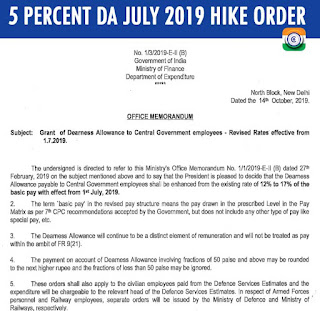Raising the Retirement age of Soldiers below the rank of officers in Defence Forces
Defence Minister Shri Arun Jaitley submitted a report to a question in Lok Sabha on 18th July 2014 about the retirement age of soldiers below the rank of officers in Defence Forces. He said, there is presently no such proposal to increase the retirement age of soldiers below the rank of officers in the defence forces. And the details of the retirement age of various category of officers and soldiers in the defence forces (excluding Armed Forces Medical Services) at present, are as under:
ARMY :
* Service limit includes extension of 2 years by screening.
Note 1: In all categories below officer ranks, age limit or service limit whichever occurs earlier is applicable for retirement. Note 2: Above information does not cover officers of certain specialised branches.
Navy:
Air Force:
Retirement age of Airmen is 57 years. Retirement age for officers is as given below:
(i) Permanent Commissioned Officers:
(iii) 57 years for Education and Meteoro-logical branches.
(ii) Branch Commissioned Officers: 57 years.
Defence Minister Shri Arun Jaitley submitted a report to a question in Lok Sabha on 18th July 2014 about the retirement age of soldiers below the rank of officers in Defence Forces. He said, there is presently no such proposal to increase the retirement age of soldiers below the rank of officers in the defence forces. And the details of the retirement age of various category of officers and soldiers in the defence forces (excluding Armed Forces Medical Services) at present, are as under:
ARMY :
| Officers | Other Ranks | ||
| General | 62 years or3 years of tenure whichever is earlier | Sub Major | 54 years or 34 years* of service or4 years of tenure whichever is earlier |
| Lt. Gen | 60 years | Subedar | 52 years or 30 years*of service |
| Maj. Gen | 58 years | Naib Subedar | 52 years or 28 years*of service |
| Brigadier | 56 years | Havildar | 49 years or 26 years*of service |
| Colonel | 54 years | Naik | 49 years or 24 years*of service |
| - | - | Sepoy Gp (X) | 42 years or 19 years*of service |
| - | - | Sepoy Gp (Y) | 48 years or 22 years*of service |
Note 1: In all categories below officer ranks, age limit or service limit whichever occurs earlier is applicable for retirement. Note 2: Above information does not cover officers of certain specialised branches.
Navy:
| Officers | Sailors | ||
| Admiral | 62 years or3 years of tenure whichever is earlier | Master Chief Petty Officer (MCPO) I and II | 57 years |
| Vice Admiral | 60 years | Chief Petty Officer (CPO) and below | 52 years |
| Rear Admiral | 58 years | - | - |
| Commodore/ Captain (Education) | 57 years | - | - |
| Commodore/ Captain | 56 years | - | - |
| Commander | 54 years | - | - |
| Lt. Commander and below | 52 years | - | - |
Air Force:
Retirement age of Airmen is 57 years. Retirement age for officers is as given below:
(i) Permanent Commissioned Officers:
| Air Chief Marshal | 62 years or 3 years of tenure whichever is earlier |
| Air Marshal | 60 years |
| Air Vice Marshal | 58 years |
| Air Commodore | (i) 56 years for Flying Branch |
| (ii) 57 years for other branches | |
| Group Captain (Select) | (i) 54 years for Flying Branch |
| (ii) 57 years for other branches | |
| Wing Commander and Group Captain (Time Scale) | (i) 52 years for Flying Branch. |
| (ii) 54 years for Ground Duty Branches other than education and meteorological branches. |
(iii) 57 years for Education and Meteoro-logical branches.
(ii) Branch Commissioned Officers: 57 years.
Various measures taken by the Government for the welfare of
soldiers and officers include improvement in living and working
conditions through provision of better infrastructure and facilities,
additional family accommodation, facilities for movement of troops from
border areas and liberalised leave policy, deployment of psychological
counsellors for psychological counselling, provisions for medical
and health care as per extant rules, provisions to address the
educational needs of service personnel and their wards, Group Insurance
Scheme, Canteen Stores Department (CSD) facilities, establishing a
grievance redressal mechanism and Schemes / Programmes for pre and post
retirement training, re-employment and self-employment of ex-servicemen
etc.
Source: CGEN.in








0 comments:
Post a Comment